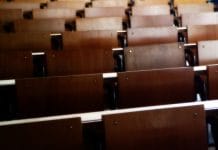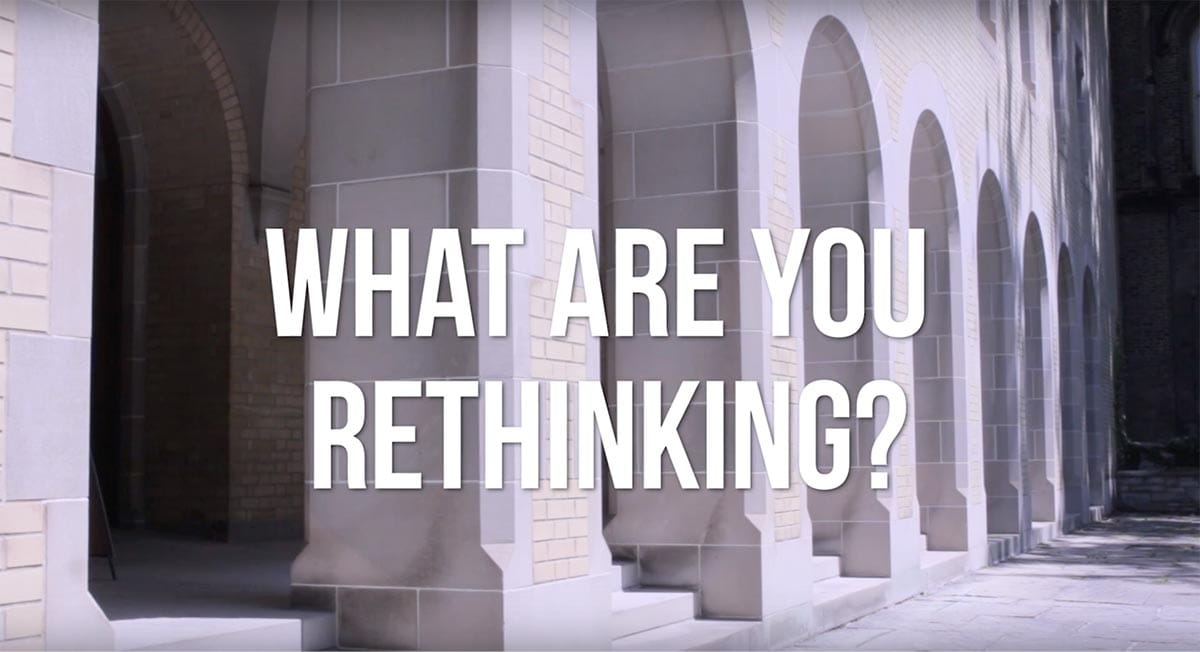An appointment to the President’s Teaching Academy recognizes a sustained excellence in teaching, research in teaching and the integration of this research with their teaching practice at U of T. Each year, new members join and find inspiration from the colleagues’ work and share their own experiences, insights and interests with the Academy.
In 2016, they welcomed three new members into the Academy, recipients of the President’s Teaching Award: Alison Gibbs, Department of Statistical Sciences, Jonathan Rose, Electrical & Computer Engineering, and James Thomson, Department of Ecology & Evolutionary Biology. We chatted with the new members about their teaching and goals in the classroom and beyond.
In reflecting on joining the Academy, Gibbs says, “I expect to be challenged and surprised as I work with and learn from members of the Academy from across the University.” Even before attending her first meeting, she felt the impact of receiving this award. “(It had) already expanded my personal reflections on my teaching, encouraging me to think about the importance of effective, reflective, and scholarly teaching practice on an institutional scale.”
Thomson hopes to encourage other members and the wider community to rethink their own perspectives on educational leadership. “I want to push the advantages of writing course-specific textbooks,” Thomson says. “I think that most people write off that possibility as too burdensome—as I did for years! —but there are some critical shortcuts worth considering. It can be a worthwhile undertaking, with benefits for the instructor and the students.”
Jonathan Rose speaks to his particular engagement with and interest in experiential learning. “I can imagine that seeing and hearing about how other disciplines do experiential learning would inform how we, in Engineering, can approach it in new and different ways.”
Rose hopes to shine a light on the many ways this can be integrated into university teaching, in Engineering and beyond. “I can offer my own experience in project-based learning in the engineering context to other members of the University.”
Drawing from their own disciplinary practices to build connection is a theme for our new Academy members. Gibbs remarks, “There is a tremendous opportunity to collaborate and share expertise and experience. I hope to be part of the planning, building, enhancing, and encouraging more conversations about teaching statistics, beyond our academic structures and beyond course constructs.” Gibbs, as a member of the Department of Statistical Sciences, sees how she can contribute to the process. “Naturally I have a particular interest in how statistics is taught. I hope to leverage my membership in the Academy towards improving cross-context collaboration in the development of statistical reasoning — which could be a model for other methods and ways of thinking that permeate other disciplines.”
Thomson hopes to encourage the wider university community to engage in another high-impact practice. “I would urge instructors to consider more ways to engage undergrads in research, through course opportunities like 299s, 399s, 498s, and through other means.”
Thomson believes U of T, as a major research institute, can provide world-class expertise to our students. He adds, “Personally, I will fund a couple of undergraduates to spend a summer doing independent research at the field station I work at, the Rocky Mountain Biological Lab, which has a long record of changing students’ lives. It’s priceless to plunge a few students into an intense, immersive research experience in an environment they can’t experience in Toronto.”
Becoming a member of the Academy can be an opportunity for members to rethink their own pedagogical goals and practice. This can be a larger conversation in departments as they consider the curriculum renewal and redesign process. In Statistical Science, Gibbs says, “We’re talking about the knowledge, skills, and habits of mind that we want our students to develop and how we can ensure these are prominently addressed and assessed in our curriculum.” For Gibbs, this also goes beyond the classroom. “I’m thinking a lot about the various ways that students acquire these (skills), and not just in our classrooms and traditional course structures. And I’m rethinking how we might encourage and strengthen an undergraduate community of learners in the face of our massive growth in enrolment.”
Jonathan Rose is rethinking his approach to an undergraduate laboratory course that introduces engineers to software. “It is both a fantastic opportunity to introduce real engineering concepts, early on,” Rose says. “And a rather large ‘shock’ to students when coming face-to-face with the complexity and critical/logical thinking that this requires.”
It is this divide that Rose wants to address. “Some students grow quickly to this challenge, and others find it overwhelming. I’d like to find new ways to help them on this journey so I’ve been rethinking the nature of the laboratory experience, and the teaching support. This year I’d really like to move to an interactive, online, animated textbook that seems to me to be able to better help those who find the material difficult to take in.”
It’s this kind of inquiry and reflection that the Academy hopes to not only practice as a community, but to encourage widely across the University. Raising the profile of teaching and encouraging all instructors towards excellence is exactly what this group of leaders comes together to do, and the new members are already adding so much to the conversation about teaching at the University of Toronto.
________________________________________________________________________
The Academy meets several times a year to discuss teaching-related issues at the University, and to offer advice to senior leadership in an annual meeting, functioning as advocates for excellence in teaching within and without the University. In a May 2016 meeting with the President and Provost, Academy members shared one aspect of teaching and learning at the University of Toronto that they are currently rethinking – in the form of a metaphorical “Tweet.” With approximately 140 characters to capture their big ideas about the future of teaching at U of T, Academy members discussed a broad range of innovations and changes that paint to a bright future for teaching at the University.
How can we evaluate and improve the undergraduate research experience? It’s something that is central to our mission.
John Percy, Astronomy & Astrophysics
Rethinking my curriculum to leverage cloud software to better scale, in order to improve student skills and experience.
Don Boyes, Geography & Planning
At the end of the day, whatever plans we put in place must all focus on the experiences of individual students.
Barbara Murck, Geography, UTM
What are the unique qualities of being together in the same place and time? How can we use them to enhance face-to-face teaching?
Diane Horton, Computer Science
How do we better engage students who are taking a course to fulfill a requirement, not because they are interested in the material?
Paul Gries, Computer Science
I am rethinking active learning and effective assessment in large classrooms when faced with a sustained enrolment boom, and avoiding burnout.
Karen Reid, Computer Science
Reinventing online humanities courses so more undergraduates can participate in intensive research experiences in professors’ areas of expertise.
Shafique Virani, Historical Studies, UTM
Spring lovely now, but could we design more nature life in the bleak winter campus – early blooms Witch Hazel snowdrops hellebores & berries for birds?
Helen Batty, Family and Community Medicine
Content – what’s the point?
Zubin Austin, Pharmacy
How do we enable students to learn at their own pace and from their own place?
Christopher Perumalla, Physiology and Division of Teaching Laboratories
Create a learning climate where students feel comfortable giving feedback to their teachers, on their teaching, verbally.
Ivan Silver, Psychiatry
Assessment as a developmental conversation.
Susan Lieff, Psychiatry
I’m thinking of how to leverage the value of groups and their diversity, and how to add value to in-person learning, and change the University to a place that promotes relationships as well as enhances knowledge.
Greg Evans, Chemical Engineering & Applied Chemistry
I’ve been rethinking science curriculum. Should, for example, general chemistry be taught as if it was the first chemistry course which a student takes, and upon which they will build, or should it be taught as if it the last chemistry course a student is going to take, which is true for the majority of students, and focus on a program that generates skills and science literacy.
Judith Poë, Chemical and Physical Sciences, UTM
I’ve been rethinking teaching in competition with a smartphone – or, how to engage students who tend to limit their attention to less than 140 characters.
Jim Wallace, Mechanical & Industrial Engineering
How do we put feedback at the centre of our teaching?
Susan McCahan, Mechanical & Industrial Engineering and Vice-Provost, Innovations in Undergraduate Education
How to get our UofT teaching and learning stories both shared internally and promoted externally?
Carol Rolheiser, Curriculum, Teaching & Learning and Director, CTSI























